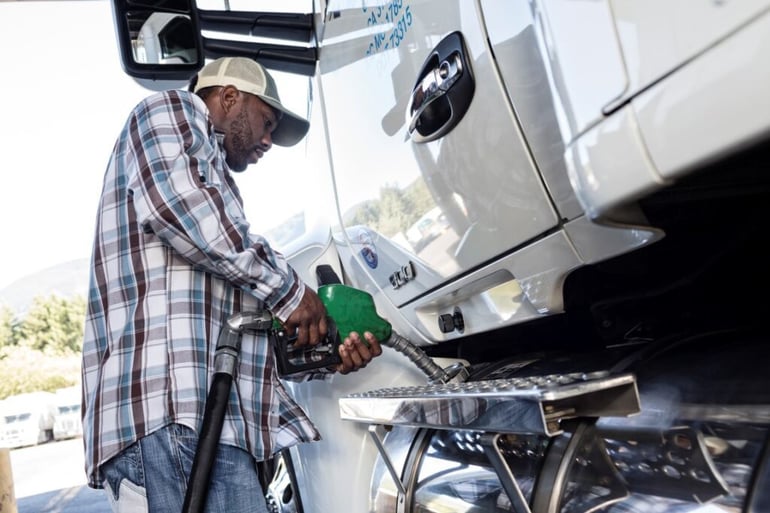Implementing transportation route optimization can pose challenges. However, having access to free tools like Google Maps offers significant benefits to companies seeking cost-effective solutions.
Moving from manual methods, such as pen and paper, to digitizing information empowers them to make more informed decisions based on data, leading to more comprehensive and strategic choices.
Let’s start with the basics…
What is Route Optimization?
Route optimization is designed to improve efficiency and reduce operational costs within logistic operations. Its overarching goal is to complete deliveries efficiently, and manage all the variables that can affect the planned routes.
Transportation route optimization management has become a cornerstone of the digital infrastructure for logistics and distribution entities. Its impact on businesses worldwide is significant, enabling them to leverage technology for efficient product delivery to customers.
So, what is transportation route optimization? Transportation, delivery and distribution optimization is the process of finding the best and most cost-effective route for delivery drivers.
However, this doesn’t necessarily mean finding the shortest route; transportation and distribution route-planning systems within logistics focus on minimizing the total driving time when making any number of stops, taking into account the following variables to improve and optimize these routes in real-time:
- Delivery time windows
- Vehicle load capacity (weight and volume)
- Driver schedule
- Proximity of driver and/or warehouse location
- Traffic congestion
- Possible accidents on the road
- Point to point route distance
► Finding the best way to plan and optimize a transportation route can be both tedious, and a highly inaccurate process; take into account for example, 10 stops for 2 or 3 vehicles, that’s literally hundreds, if not thousands of possible routes.
SaaS providers, like Drivin, offer Transportation Management Systems (TMS) that swiftly calculate the best, most efficient routes, maximizing your drivers' delivery capacity in each shift.

Can I optimize routes with Google Maps?
Can I plan my transportation routes with Google Maps?
Yes! Google Maps is a great planning tool for personal use, as well as a great initiation point when it comes to transportation route planning.
Google Maps provides directions for several modes of transportation, including driving, walking, biking, and public transit.
It’s as simple as entering your starting point and destination, and Google Maps will provide you with step-by-step directions, as well as the estimated time of arrival for each route. You can also customize your route by selecting different transportation options or avoiding highways, tolls, or ferries.
However, when it comes to route optimization, Google Maps, or other companies, like Waze, don’t necessarily specialize in the matter.
That’s where Transportation Management Systems, or TMS, come in.
SaaS TMS offer real-time optimization, and take into account many variables, such as weather, events, road restrictions, traffic, time restrictions, as well as offer a personalized experience and much more.

Is manual planning still a thing?
Yep! Manual planning is still going, and a completely valid way to plan routes if you’re just starting out and trying the delivery business. With that being said, I must stress the importance of being aware of the cons of manual planning, humans can only go so far, right?
I’m pretty sure we’re all aware of the huge role the pandemic -and the looming global recession predicted for 2023- has had on both customers and businesses.
Having the luxury of messing an order up because of a typo, or running late with the delivery schedule, is a big no-no nowadays.
This is especially important when it comes to expanding businesses, with an influx of orders and the need to plan quickly and accurately.
Using algorithm-based software, like Drivins’, is an ideal solution when it comes to optimizing multiple routes with specific restrictions and parameters in place.
Why is transportation route optimization so essential?
Regrettably, as humans, we lack the mental capacity to handle the multitude of variables and information involved in manual planning, especially when multiplied by a high number of deliveries per vehicle. Additionally, accurately determining the fastest and most efficient routes based on data becomes a challenge beyond our abilities.
Even if you could, you’d be spending unjustifiable amounts of time managing delivery routes, all while running the risk of drastically increasing your operating costs due to problems such as overbooking vehicles and excessive fuel usage.

It’s safe to say how essential routing software can be, especially for companies with a large fleet at their feet (see what I did there? hihi). Manual planning is an extremely time-consuming method to plan routes that might be subject to change, making it difficult for drivers to adjust to the new layout.
In addition, transportation route optimization is often seen as the fastest way to navigate multiple stops, but in reality the software takes into account other variables, such as road dimensions and vehicle constraints, while combining artificial intelligence and historical data.

How can I optimize routes?
Looking to optimize your transportation routes? Planning delivery routes is no easy thing, and depending on the amount of deliveries, is almost impossible to do efficiently by hand and without the necessary technology.
The use of efficient routes also has the benefit of saving fuel that would otherwise be wasted by sending different trucks to the same or near destination.
Here are a few other variables that routing software, like Drivin's, take into account for logistics operations:
- Available schedules
- Driver closest to destination
- Delivery times
- Driver breaks
- Driver qualifications
- Legal requirements
- Loading capacity
- Time windows
- Traffic conditions
In conclusion, transport route optimization heavily relies on sophisticated technology and is nearly impossible to achieve manually. Unfortunately, human brains lack the capability to calculate thousands of different parameters required to find the best route for a single truck, let alone an entire fleet.
Cloud-based solutions, such as the one Drivin offers, are great ways to get started on data influenced route planning.
► Read Part II.

.jpg)
.jpg)
